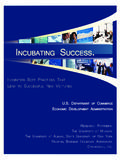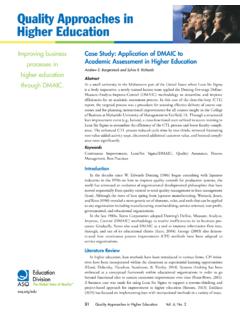Transcription of Fourth edition Anthrax - Home: OIE
1 Anthraxin humans and animalsFourth editionFood and Agriculture Organization of the United NationsWorld Organisation for Animal HealthAnthrax in humans and animalsFourth editionFood and Agriculture Organization of the United NationsWorld Organisation for Animal Health World Health Organization 2008 All rights reserved. Publications of the World health organization can be obtained from Who Press, World health organization, 20 Avenue Appia, 1211 Geneva 27, Switzerland (tel.: +41 22 791 3264; fax: +41 22 791 4857; e-mail: requests for permission to reproduce or translate Who publications whether for sale or for noncommercial distribution should be addressed to Who Press, at the above address (fax: +41 22 791 4806; e-mail: the designations employed and the presentation of the material in this publication do not imply the expression of any opinion whatsoever on the part of the World health organization concerning the legal status of any country, territory, city or area or of its authorities, or concerning the delimitation of its frontiers or boundaries.))
2 Dotted lines on maps represent approximate border lines for which there may not yet be full mention of specific companies or of certain manufacturers products does not imply that they are endorsed or recommended by the World health organization in preference to others of a similar nature that are not mentioned. errors and omissions excepted, the names of proprietary products are distinguished by initial capital reasonable precautions have been taken by the World health organization to verify the information contained in this publication. however, the published material is being distributed without warranty of any kind, either expressed or implied. the responsibility for the interpretation and use of the material lies with the reader. in no event shall the World health organization be liable for dam-ages arising from its cover illustration: the pictures are from a book, and also featured on a poster, conveying the story of the problems the fictional Liseli family suffered following the death of their cows from Anthrax .
3 The message to farmers/owners of livestock is that they should not handle and butcher the carcasses of animals that have died unexpectedly or eat meat from such carcasses, but rather that they should call a veterinary official to supervise correct disposal of the carcass. (Source: dietvorst, 1996b.)Back cover photograph: Scanning electronmicrograph of spores of B. anthracis isolated from an elephant (LA[1] ) that had died of Anthrax in 1991 in the etosha national Park, namibia (turnbull et al., 1998b). the long axis of the spore is just over 1 m ( mm).designed by minimum graphicsPrinted in ChinaWho Library Cataloguing-in-Publication dataAnthrax in humans and animals 4th etiology. pathology. prevention and control. health organization. and Agriculture organization of the united nations.
4 Organisation for Animal 978 92 4 154753 6 (nLM classification: WC 305)ContentsAcknowledgements vdevelopment of these guidelines viPreface viiSummary 11. The disease and its importance 8 the natural disease 8 deliberate release bioaggression 82. Etiology and ecology 9 Spores and vegetative forms 9 Seasonality 14 Strains and ecoepidemiology 16 Anomalies of history 173. Anthrax in animals 18 host range, susceptibility and infectious dose 18 incidence of Anthrax in animals 20 transmission, exacerbating factors and epidemiology in animals 21 Clinical manifestations; incubation periods 29 diagnosis 334. Anthrax in humans 36 human incidence 36 Susceptibility: data for risk assessments 37 epidemiology and transmission: the forms of Anthrax 41 Clinical disease in humans 435.
5 Pathogenesis and pathology 53 events after entry through a lesion 53 events after entry by inhalation 54 events after entry by ingestion 54 the role of phagocytosis 54 Virulence factors 566. Bacteriology 61 description 61 detection and isolation 61 identification and confirmation 62 Molecular composition 67 Spores 67iiiAcknowledgements other surface antigens: Anthrax -specific epitopes and detection methodology 68 transport of clinical and environmental samples 697. Treatment and prophylaxis 70 overview 70 response to outbreaks in animals 77 treatment of humans 808. Control 89 introduction 89 discontinuation of infection source 89 disposal of Anthrax (animal) carcasses 89 human cases: infection control in management 92 Fumigation, disinfection, decontamination 93 Prophylaxis 93 decisions on treatment and/or vaccination of livestock 99 duration of veterinary vaccination programmes 99 intersectoral issues: the question of eradication 99 Control in wildlife 1009.
6 Anthrax surveillance 101 introduction 101 objectives 102 Surveillance reporting outline 102 human surveillance 106 Veterinary surveillance 107 Communication of disease data 108 templates for control programmes from the Model Country Project 109 Annexes 115 Annex 1 Laboratory procedures for diagnosis of Anthrax , and isolation and identification of Bacillus anthracis 117 Annex 2 Media, diagnostic phage and stains 139 Annex 3 disinfection, decontamination, fumigation, incineration 143 Annex 4 the terrestrial Animal health Code 155 Annex 5 Vaccines and therapeutic sera 157 Annex 6 Contingency plan for the prevention and control of Anthrax 170 Annex 7 Sampling plans for environmental testing of potentially contaminated sites 176 References 179 Index 198 Anthrax In HUmAns And AnImAlsivAcknowledgementsExecutive editor: Peter Turnbull,1 Salisbury, United KingdomProject leader: Ottorino Cosivi, World Health Organization, Geneva, SwitzerlandMain contributors David Ashford, USDA, c/o United States Consulate, S o Paulo, Brazil; Wolfgang Beyer, University of Hohenheim, Stuttgart, Germany; the late Beniyamin Cherkasskiy, Central Research Institute of Epidemiology, Moscow, Russian Federation; Mehmet Doganay, Erciyes University, Kayseri, Turkey.
7 Dan Dragon, University of Alberta, Edmonton, Canada; Martin Hugh-Jones, Louisiana State University, Baton Rouge, USA; Arnold Kaufmann, Centers for Disease Control and Prevention, Atlanta, USA; the late Regula Leuenberger,2 WHO, Geneva, Switzerland; Andrew Turner, Victoria, Australia; Williamina Wilson, WHO, Geneva, Switzerland. Other contributorsJean-Luc Angot, World Organisation for Animal Health (OIE); Lorraine Arntzen, National Institute for Communicable Diseases, Sandringham, South Africa; Katinka de Balogh, Food and Agriculture Organization of the United Nations (FAO); Reinhard B hm, University of Hohenheim, Stuttgart, Germany; Gideon Br ckner, World Organisation for Animal Health (OIE); Robert Bull, Naval Medical Research Center, Silver Spring, USA; John Collier, Harvard Medical School, Boston, USA; Shu-Lin Dong, Lanzhou Institute of Biological Products, Lanzhou, China; Kevin Ellard, New Town, Tasmania, Australia; Philip Hanna, University of Michigan Medical School, Ann Arbor, USA; Paul Keim, Northern Arizona University, Flagstaff, USA.
8 Theresa Koehler, Houston Medical School, Houston, USA; Victor Ladnyi, Central Research Institute of Epidemiology, Moscow, Russian Federation; Stephen Leppla, National Institute of Allergy and Infectious Diseases, Bethesda, USA; Niall Logan, Glasgow Caledonian University, Glasgow, United Kingdom; Steve McClung, Lamina Flow Consultants, Sterling, USA; Mark Munson, Naval Medical Research Center, Silver Spring, USA; Richard Rupert, Environmental Protection Agency, Philadelphia, USA; Kimothy Smith, Department of Homeland Security, Washington , USA; Sue Welkos, United States Medical Research Institute of Infectious Diseases, Frederick, thanks go to the following for considerable help with references and other support facilities: Jennifer Broussard, Louisiana State University, Baton Rouge, USA; Sue Goddard, Health Protection Agency, Salisbury, United Kingdom; the Library, Walter Reed Army Institute for Research/Naval Medical Research Institute, Silver Spring, USA.
9 Alfred Mateczun, Naval Medical Research Center, Silver Spring, gratefully acknowledges the financial support of the Department of International Cooperation, Ministry of Foreign Affairs, Italy and of the Humanitarian Aid Agency, Federal Department of Foreign Affairs, The executive editor has signed a declaration of interest in accordance with WHO policy and no conflict of interest was declared. The declaration of interest is available on We deeply regret the untimely death of Dr Regula Leuenberger. She contributed to the successful completion of this project and her dedication and commitment to her work will be greatly missed by her of these guidelinesthis Fourth edition of the Anthrax guidelines encompasses a systematic review of the extensive new scientific literature and relevant publications up to end 2007, as well as the conclusions of an expert meeting1 held in nice, France, in 2003.
10 Draft versions of this new edition have undergone two rounds of a rigorous peer-review process. For many sections of the document, contributions from scientists with specific areas of expertise were actively sought and the draft versions were sent to these contributors for their corrections and approval. Who is planning to develop a training package to support Member States in applying this guidance. Although new scientific information on Anthrax is expected to continue to become available, this document should remain a relevant source of information for the management of Anthrax in humans and animals for at least the next five years. Who therefore plans to review these guidelines within the next five to seven a process of wide consultation and extensive peer review, it is recognized that there is always room for improvement when developing guidance of this nature.











